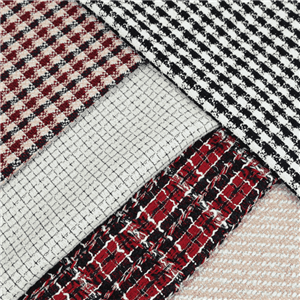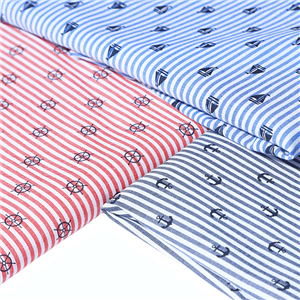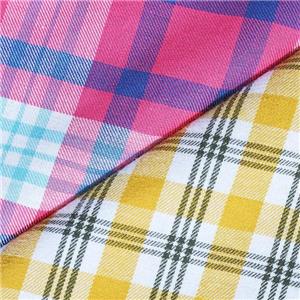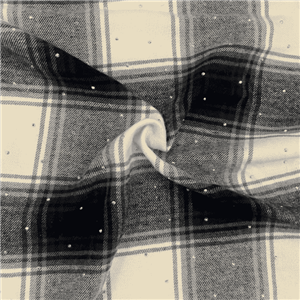What is the Difference Between Poplin and Cotton
Introduction
In the textile industry, the terms poplin and cotton are often used interchangeably, leading to widespread confusion. Cotton is a natural fiber, while poplin is a weave technique. The combination of the two — cotton poplin fabric — is one of the most popular materials for shirts, dresses, and home textiles due to its crisp yet breathable nature.
Understanding the difference between poplin fabric and cotton is essential for textile buyers, designers, and apparel manufacturers seeking the right balance between softness, structure, and cost-efficiency. As global apparel markets continue to evolve toward lightweight, durable, and eco-friendly materials, poplin fabric has re-emerged as a leading choice in both fashion and industrial applications.
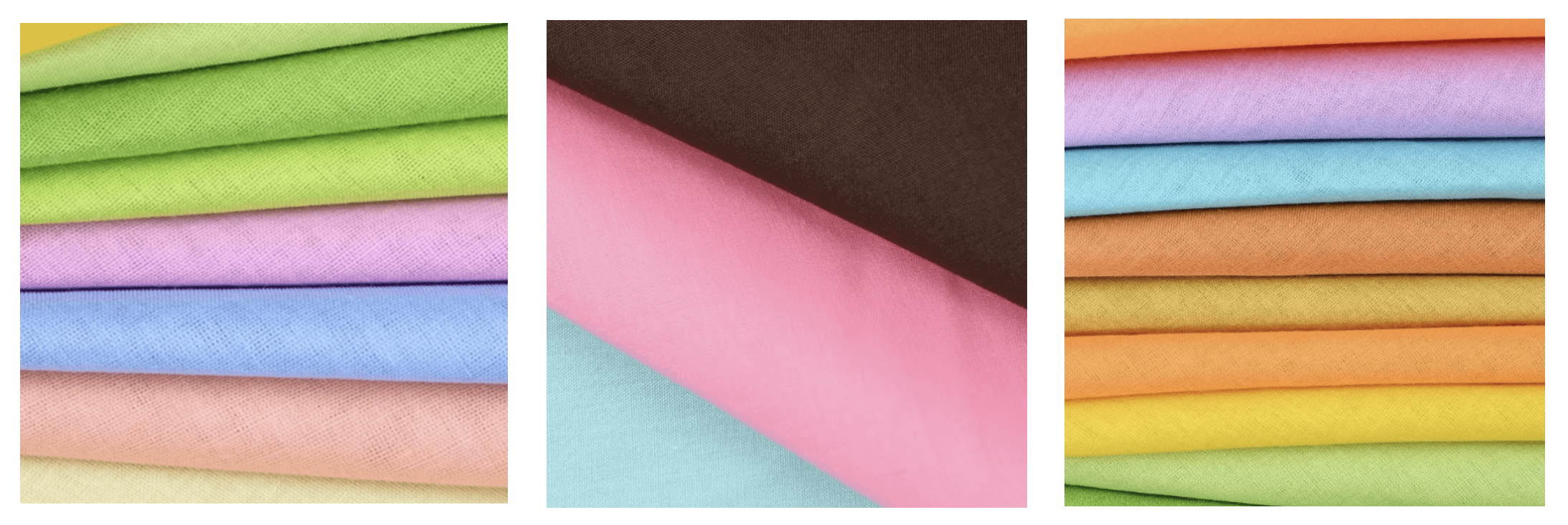
Understanding the Basics
What is Cotton Fabric?
Cotton is a soft, fluffy natural fiber obtained from the seed hairs of the cotton plant. It is known for its comfort, moisture absorption, and breathability. Cotton has been a textile staple for over 7,000 years and remains the foundation of modern fabric manufacturing.
Key characteristics of cotton fabric:
-
Fiber source: Natural cellulose fiber from cotton plant
-
Texture: Soft, breathable, and skin-friendly
-
Applications: T-shirts, bed linens, underwear, towels, and cotton poplin shirts
-
Advantages: High comfort, absorbency, dye retention, and versatility
-
Limitations: Prone to wrinkles, shrinkage, and slower drying times
Cotton’s widespread use in the fashion and textile industry comes from its adaptability. It can be woven into various structures — such as twill, sateen, or poplin — resulting in distinct performance and aesthetics.
What is Poplin Fabric?
Poplin fabric is defined by its weave pattern, not the raw material. Traditionally made from silk, modern poplin is most commonly woven from cotton or polyester. The weave is plain and tight, with fine warp yarns and thicker weft yarns, producing a subtle horizontal rib effect.
Historical background:
The term “poplin” originated in 15th-century France, where it was used for papal garments in Avignon — hence “papeline.” Over time, it evolved into a lightweight yet dense fabric ideal for both formalwear and casual use.
Key characteristics of poplin fabric:
-
Weave type: Plain weave with a subtle ribbed texture
-
Fiber composition: Can be 100% cotton, 100% polyester, or blended
-
Texture: Smooth surface, crisp drape
-
Applications: Poplin blouses, poplin shirt dresses, uniforms, upholstery, and bedding
Today’s poplin cotton fabric offers excellent durability, a professional finish, and breathability — perfect for modern apparel that demands both form and function.
Poplin vs Cotton: Key Differences
| Property | Cotton | Poplin |
|---|---|---|
| Definition | A natural cellulose fiber | A weave structure (plain weave) |
| Composition | Always made from cotton fibers | Made from cotton, polyester, or blends |
| Texture | Soft and fluffy | Smooth and crisp |
| Durability | Moderate | High, due to tight weave |
| Wrinkle Resistance | Lower | Higher, especially in polyester blends |
| Applications | Everyday wear, casual fabrics | Shirts, dresses, uniforms, upholstery |
1. Fibre vs Weave Structure
The most fundamental difference is that cotton refers to a fiber, while poplin refers to a weaving method. Poplin can be woven from cotton, polyester, or even silk. When cotton yarns are used, the result is cotton poplin fabric, combining the softness of cotton with the strength of the poplin weave.
2. Texture and Appearance
Cotton fabric tends to be soft and slightly fuzzy, whereas poplin fabric is characterized by a smooth and crisp finish. The fine ribbing of poplin fabric gives it a subtle sheen, making it ideal for cotton poplin shirts and poplin blouses that require structure without heaviness.
3. Durability and Care
Poplin’s tightly woven structure makes it more resistant to tearing and pilling compared to standard cotton weaves. However, pure cotton versions may wrinkle easily, while polyester poplin offers enhanced wrinkle resistance and quicker drying.
Care tips comparison:
-
Cotton: Gentle machine wash, tumble dry low, iron on medium heat.
-
Poplin: Machine washable, easy to iron, retains shape after multiple washes.
4. Breathability and Comfort
Cotton’s natural fibers excel in moisture absorption, while poplin fabric balances this with air circulation through its fine weave. Cotton poplin fabric provides superior comfort in hot climates — a reason it’s favored for poplin shirt dresses and summer office wear.
5. Uses and Applications
Cotton fabric is used in everything from T-shirts to towels. Poplin fabric, by contrast, is popular for structured garments such as:
-
Cotton poplin shirts for professional attire
-
Poplin blouses for women’s fashion
-
Poplin shirt dresses that combine drape and shape
-
Lightweight jackets and uniforms
-
Bed linens and decorative textiles
The versatility of poplin cotton fabric makes it a top choice across apparel and home furnishing industries.
Poplin Fabric Types
Cotton Poplin
Cotton poplin fabric is the most common type, known for being lightweight, breathable, and smooth. It’s the go-to material for cotton poplin shirts, dresses, and children’s wear. Its natural fibers make it ideal for sensitive skin and warm climates.
Benefits:
-
100% natural, biodegradable
-
Crisp yet soft hand-feel
-
Excellent printability for patterns and checks
Stretch Poplin
Stretch poplin incorporates a small percentage (usually 2–5%) of spandex or elastane, giving it improved flexibility and comfort. It’s ideal for fitted poplin blouses and poplin shirt dresses that need freedom of movement.
Key features:
-
Enhanced elasticity
-
Maintains shape after wear
-
Suitable for both men’s and women’s fashion
Polyester Poplin
Polyester poplin is widely used in uniforms, upholstery, and industrial applications due to its durability, wrinkle resistance, and easy maintenance. It’s also moisture-wicking, making it ideal for activewear or outdoor uniforms.
Advantages:
-
High strength and abrasion resistance
-
Quick drying and wrinkle-free
-
Cost-effective for large-scale production
Example comparison table:
| Poplin Type | Fiber Composition | Main Use | Key Advantage |
|---|---|---|---|
| Cotton Poplin | 100% Cotton | Shirts, Dresses | Breathable and soft |
| Stretch Poplin | Cotton + Spandex | Fitted Apparel | Flexibility |
| Polyester Poplin | 100% Polyester | Uniforms, Home Textiles | Wrinkle Resistance |
Poplin vs Other Fabrics
Poplin vs Twill
While poplin fabric uses a plain weave, twill features diagonal ribs. Twill (used in denim and chinos) is heavier and more opaque, while poplin is lighter and smoother — ideal for summer garments and formal shirts.
| Property | Poplin | Twill |
|---|---|---|
| Weave Pattern | Plain | Diagonal |
| Weight | Light | Medium to heavy |
| Appearance | Smooth | Textured |
| Best Use | Shirts, dresses | Jeans, jackets |
Poplin vs Linen
Both poplin and linen are breathable, but they differ in texture and maintenance. Linen, made from flax fibers, wrinkles easily but feels cool. Poplin cotton fabric is smoother and easier to maintain, offering a more refined look for professional or semi-formal attire.
| Property | Poplin | Linen |
|---|---|---|
| Fiber Type | Cotton or Polyester | Flax |
| Texture | Smooth and crisp | Coarse and natural |
| Wrinkle Resistance | High | Low |
| Comfort | Excellent | Excellent in hot weather |
Advantages and Disadvantages of Poplin Fabric
Advantages
-
Durability: Tight weave resists wear and tear.
-
Smooth Texture: Ideal for cotton poplin shirts and poplin blouses.
-
Easy to Print: Perfect for patterned designs and custom prints.
-
Versatile: Suitable for casual, professional, and uniform wear.
-
Low Maintenance: Especially in polyester poplin blends.
Disadvantages
-
Limited Stretch: Standard poplin has minimal elasticity.
-
Wrinkling: 100% cotton versions may wrinkle easily.
-
Lack of Insulation: Not ideal for winter garments.
Despite these minor drawbacks, poplin fabric remains one of the most practical choices for manufacturers balancing quality and cost.
Care and Maintenance Tips
To extend the life of your cotton poplin fabric or polyester poplin, proper care is essential.
Washing:
-
Use cold or lukewarm water.
-
Avoid strong detergents that damage fibers.
Drying:
-
Line dry for best results.
-
Avoid prolonged exposure to direct sunlight.
Ironing:
-
Iron while slightly damp to prevent wrinkles.
-
Use low to medium temperature for polyester blends.
Storage:
-
Keep in a cool, dry place.
-
Avoid hanging heavy garments that may stretch.
Proper care ensures cotton poplin shirts and poplin blouses retain their shape and color vibrancy for years.
Where to Buy Quality Cotton Poplin Fabric
When sourcing cotton poplin fabric, look for suppliers with integrated production, quality certifications, and a commitment to sustainability.
One trusted manufacturer is Honry Fabric — a professional fabric supplier specializing in woven textiles since 1985.
Why choose Honry Fabric?
-
Over 20 million meters annual production capacity
-
Advanced air-jet looms and automated dyeing lines
-
Certified by OEKOTEX-100, GRS, ISO9001
-
Expert in cotton poplin fabric, polyester poplin, and other woven fabrics
Explore our website to discover a full range of poplin fabric options designed for apparel, uniforms, and home textiles — combining innovation with consistent quality.
In Summary
To sum up, cotton is a fiber, while poplin is a weave. Together they form cotton poplin fabric, a durable, lightweight, and breathable material that excels in shirts, dresses, and uniforms. While cotton fabric offers unmatched softness, poplin fabric provides superior structure and wrinkle resistance.
From cotton poplin shirts and poplin blouses to polyester poplin uniforms, each variation serves unique market needs. Understanding these differences allows designers and sourcing managers to make informed, cost-effective material choices.
To learn more or source premium-grade poplin fabric, visit Honry Fabric — your trusted partner for high-quality woven textiles.

